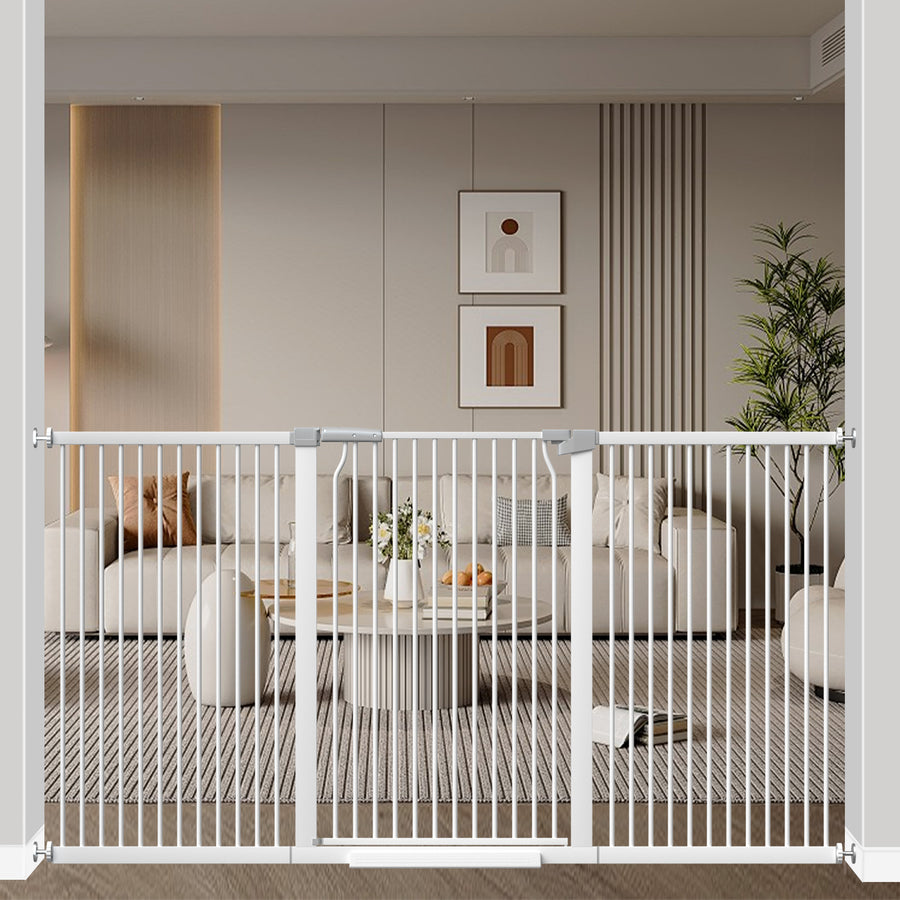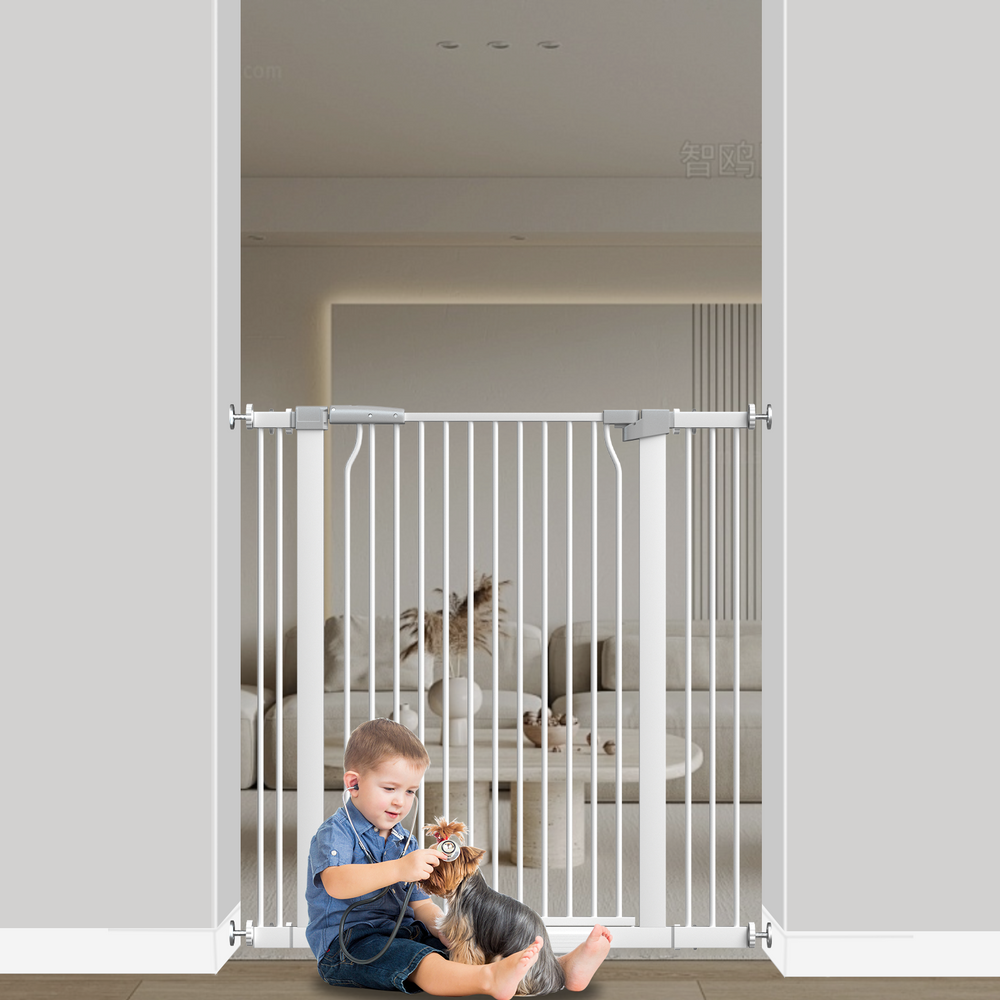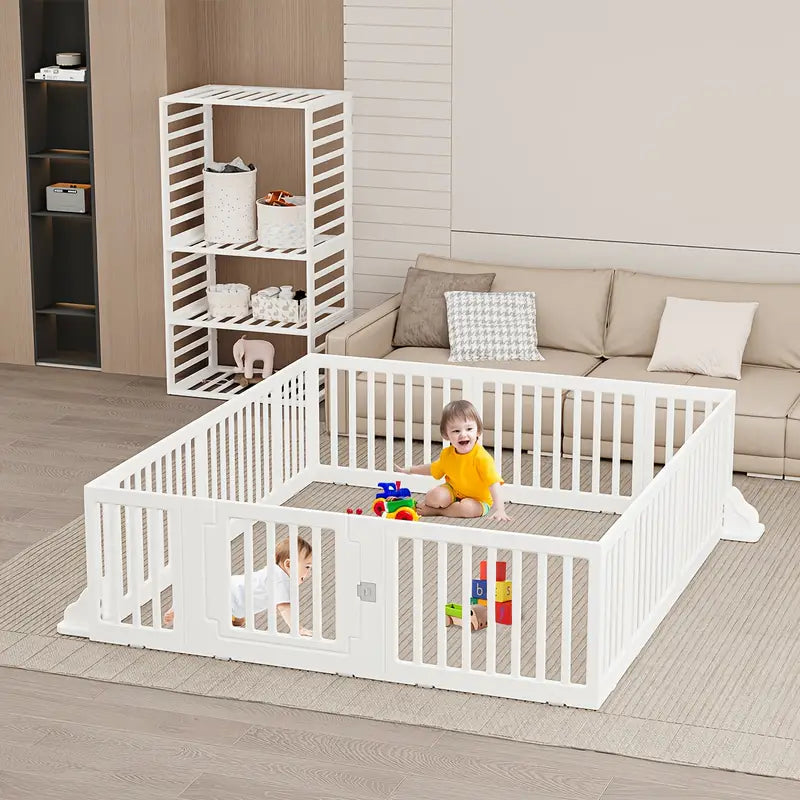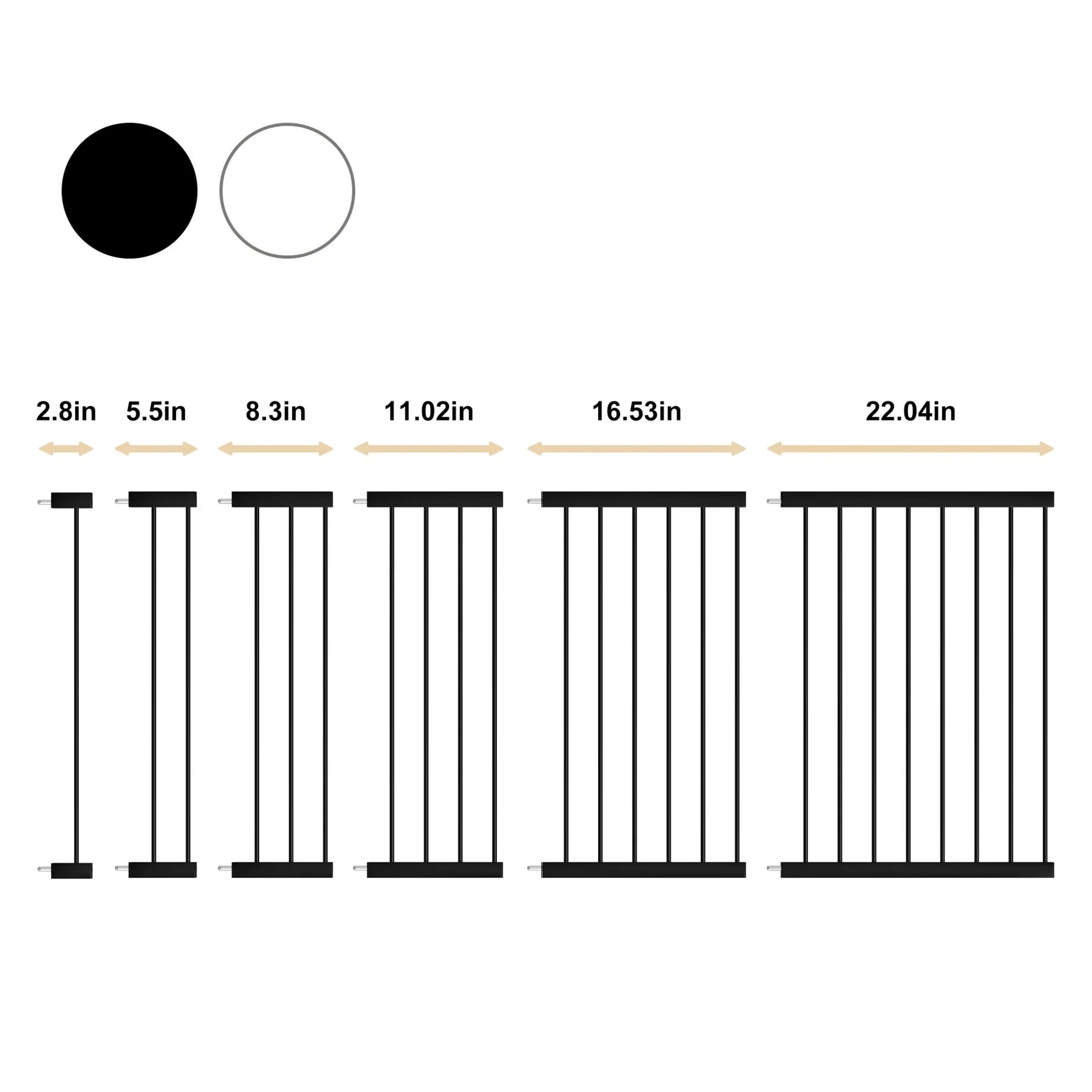Identifying Common Household Hazards for Babies: A Parent's Guide to Safety
Understanding Common Household Hazards for Babies
Bringing a new baby home is amazing, but it also means taking a hard look at your house to spot potential dangers. Babies are curious and explore everything, so what seems safe to us might be a hazard to them. It's not about creating a sterile environment, but about making smart changes to minimize risks. I remember when we brought our first child home, I thought we were prepared, but it didn't take long to realize how many things we'd overlooked.
Identifying Potential Risks
Start by thinking like a baby. Get down on your hands and knees and look around. What can you reach? What looks interesting? This will give you a whole new perspective on potential hazards. Consider things like:
- Small objects that could be choking hazards
- Sharp edges on furniture
- Unsecured cords and wires
- Cleaning supplies and medications within reach
- Stairs and other fall risks
It's also a good idea to do a room-by-room assessment. The kitchen, bathroom, and living room all have their own unique set of dangers. Don't forget about outdoor spaces too! You can find more information about choking prevention online.
Common Sources of Injury
Babies are most prone to certain types of injuries. Falls are a big one, especially as they start to crawl and walk. Poisoning is another concern, as they tend to put things in their mouths. Burns, both from hot surfaces and liquids, are also common. And of course, choking is a constant worry. Here's a quick breakdown:
| Injury Type | Common Causes | Prevention Tips |
|---|---|---|
| Falls | Stairs, furniture, slippery floors | Install gates, secure furniture, use non-slip mats |
| Poisoning | Cleaning supplies, medications, plants | Store items out of reach, use childproof locks, know poison control number |
| Burns | Hot surfaces, hot liquids, electrical outlets | Use stove guards, check bathwater temperature, cover outlets |
| Choking | Small objects, food | Keep small objects out of reach, cut food into small pieces, supervise during meals |
The Importance of Awareness
Babyproofing isn't a one-time thing. It's an ongoing process. As your baby grows and develops, their abilities and interests will change, and you'll need to adapt your safety measures accordingly. Stay vigilant and keep learning about home safety. It's also important to educate other caregivers, like grandparents and babysitters, about potential hazards and how to prevent injuries.
Creating a safe environment for your baby is a top priority. It requires constant vigilance, adaptation, and education. By understanding the common hazards and taking proactive steps, you can significantly reduce the risk of injury and create a secure space for your little one to explore and grow.
Burns, Scalds, and Fire Safety
Preventing Burns in the Kitchen
The kitchen is a hot spot (pun intended!) for potential burns and scalds. Always keep hot pots, pans, and dishes out of reach of little hands. I learned this the hard way when my toddler reached for a pot handle and nearly pulled a boiling pot of pasta water down on himself. It was terrifying!
Here are some things I do now:
- Use the back burners whenever possible.
- Turn pot handles inward, away from the edge of the stove.
- Never hold a baby while cooking on the stove.
- Keep hot drinks away from the edges of tables and counters.
It's also a good idea to have a working fire extinguisher in the kitchen and know how to use it. I actually had to use mine once when I accidentally set a dish towel on fire. It was a small fire, but it could have been much worse if I hadn't had the extinguisher handy.
Safe Bathing Practices
Bathing your baby should be a relaxing and enjoyable experience, but it's important to take precautions to prevent scalds. Always, always check the water temperature before placing your baby in the tub. The ideal bath temperature is around 100°F (38°C). You can use a bath thermometer to be sure.
- Run cold water first, then add hot water gradually.
- Stir the water well to ensure even temperature distribution.
- Never leave a baby unattended in the bathtub, even for a second.
- Consider installing an anti-scald device on your faucets.
Fire Safety Measures
Fire safety is something we all need to take seriously. Smoke detectors are a must-have in every home, especially in rooms where people sleep. Test them monthly and change the batteries at least once a year. I set a reminder on my phone so I don't forget.
Here's a quick checklist:
- Install smoke detectors on every level of your home and inside and outside of sleeping areas.
- Test smoke detectors monthly.
- Change smoke detector batteries at least once a year (or as recommended by the manufacturer).
- Have a fire escape plan and practice it regularly. Make sure everyone in the family knows what to do in case of a fire.
- Never leave candles unattended and keep them out of reach of children. I switched to battery-operated candles, and they look just as nice!
It's also a good idea to teach your children about fire safety from a young age. Show them what smoke detectors look like and explain what to do if they hear one go off. You can even make it a game to practice your fire escape plan.
Choking Hazards and Prevention
Common Choking Risks
Babies explore the world by putting things in their mouths, which makes them vulnerable to choking. It's important to be aware of common household items that pose a choking risk. These include:
- Small toys or toy parts (especially those that can fit entirely in a child's mouth)
- Coins
- Buttons
- Marbles
- Balloons (especially uninflated or broken pieces)
- Certain foods (grapes, hot dogs, nuts, popcorn, hard candies)
Always supervise your baby during playtime and mealtimes. Regularly check the floor for small objects that may have fallen. A good rule of thumb: if it can fit through a toilet paper tube, it's too small and dangerous for a baby.
Safe Toy Guidelines
Choosing safe toys is important for preventing choking. Here are some guidelines:
- Age Appropriateness: Always select toys that are appropriate for your baby's age and developmental stage. Check the manufacturer's age recommendations on the packaging.
- Size Matters: Avoid toys with small parts that can be easily detached and swallowed. A helpful tip is to use a small parts tester (or a toilet paper roll as mentioned above) to check if a toy is too small.
- Durability: Choose well-made toys that are durable and won't break easily into small pieces. Regularly inspect toys for damage and discard any that are broken or worn.
Emergency Response for Choking
Knowing how to respond to a choking emergency can save a baby's life. It's highly recommended to take a CPR class that includes infant-specific techniques. Here are the basic steps for responding to a choking infant:
- Assess the Situation: If the baby is coughing forcefully, encourage them to continue coughing. Do not interfere unless the baby is unable to cough, breathe, or make any noise.
- Back Blows: Hold the baby face down over your forearm, supporting their head and jaw. Give five firm back blows between the shoulder blades using the heel of your hand.
- Chest Thrusts: If back blows are ineffective, turn the baby face up. Place two fingers in the center of the baby's chest, just below the nipple line. Give five quick downward thrusts, compressing the chest about 1.5 inches.
- Repeat: Continue alternating between back blows and chest thrusts until the object is dislodged or the baby becomes unresponsive. If the baby becomes unresponsive, call emergency services immediately and begin infant CPR.
| Step | Description p id=
Toxic Substances and Chemicals
Identifying Household Toxins
Okay, so, little ones? They explore everything with their mouths. That's why knowing what's toxic in your house is super important. We're not just talking about obvious stuff like bleach. Think about things like cleaning supplies, medications, and even some houseplants. It's kind of scary when you start to realize how many things could be dangerous. Make a list of all the potential toxins in your home.
- Cleaning products (bleach, detergents, disinfectants)
- Medications (prescription and over-the-counter)
- Personal care products (mouthwash, nail polish remover)
- Pesticides and herbicides
- Automotive fluids (antifreeze, motor oil)
It's a good idea to do a room-by-room sweep. Check under sinks, in cabinets, and on shelves. If you're not sure if something is toxic, look it up! The Poison Control Center website is a great resource.
Safe Storage Practices
Alright, you've identified the toxins. Now what? Time to lock them up! Seriously, get those child-resistant locks for your cabinets. And don't just put stuff up high – kids are surprisingly good climbers. Think about where you store things. Are they easily accessible? Could a kid potentially get to them by dragging a chair over?
Here's a quick checklist:
- Lock it up: Use child-resistant locks on all cabinets and drawers containing toxins.
- Store up high: Place items on high shelves, out of reach and sight.
- Original containers: Keep products in their original containers to avoid confusion.
Understanding Labels and Warnings
Those labels on cleaning products and medications? They're not just there for decoration. They're actually really important! Take the time to read them. Understand the warnings, the first aid instructions, and what to do if something is accidentally ingested. It's also a good idea to familiarize yourself with the signal words like "Danger," "Warning," and "Caution." These words give you an idea of how toxic a substance is.
| Signal Word | Meaning The first aid instructions are important. I should probably keep a list of the emergency numbers near the phone, just in case.
Furniture and Equipment Safety
Choosing Safe Furniture
When you're getting ready for a baby, it's easy to get caught up in all the cute furniture. But before you buy that adorable crib or changing table, think about safety. Make sure any new baby furniture meets safety standards. Check for things like sturdy construction, non-toxic finishes, and no sharp edges. You don't want anything that could potentially hurt your little one. Also, as your child grows and learns to climb and open things, you need to be alert for new hazards. You’ll probably need to change the environment to make sure your home is still a safe and creative place to play and explore. And along with supervision and a safe environment, you can also improve home safety by helping your child learn what’s safe and what’s not. If children have a creative space to play and explore, with plenty of interesting things to do and look at, they’ll be less likely to seek their own stimulation by exploring areas you might not want them to get into.
- Check for certifications from safety organizations.
- Avoid furniture with small, detachable parts.
- Ensure crib slats are close enough together to prevent entrapment.
It's a good idea to register your baby furniture. That way, if there's a recall, you'll be notified right away.
Securing Heavy Items
Babies are curious and they love to explore. That means they might try to climb on things they shouldn't, like bookshelves or dressers. To prevent furniture from tipping over, secure heavy items to the wall using brackets or furniture straps. It's a simple step that can make a big difference. You’ll also want to secure freestanding appliances like televisions and microwaves, in case your little explorer tries to climb on them. Safety latches on drawers and cabinets can help your little one from accessing potentially dangerous items like cleaning supplies, medication, and sharp objects. Apply corner guards to any sharp corners or edges in your home in reach of babies and toddlers. They’re inexpensive and easy to install, with bumpers that provide a protective cushion against sharp edges. Check your tables, countertops, shelves, fireplace hearths, and other hard surfaces!
- Use anti-tip brackets or straps.
- Anchor furniture to wall studs for maximum stability.
- Test the stability of furniture after securing it.
Baby Gear Safety Tips
From strollers to high chairs, baby gear can make life easier. But it's important to use it safely. Always follow the manufacturer's instructions and never leave your baby unattended. Be sure to choose reputable, durable tools that are easy to install and meet safety standards. Always follow the manufacturer’s instructions when installing and using baby proofing tools to ensure their efficacy. Also, regularly inspect gear for any signs of wear and tear. Replace anything that's damaged or broken. Windows and doors come with a risk of falls, entrapment, and pinched fingers. Make sure that all of your windows have window guards and window stops to prevent your baby from falling, especially on any upper floors in your home. Your window guard should attach to the window frame and have bars no wider than four inches apart. Some windows have these built in already. Doorstops and door holders can prevent doors from closing suddenly, smashing baby’s fingers. Childproof locks and door handle covers can prevent your little explorer from wandering into dangerous areas like basements or garages. Many kids will learn how to open these “child proof” door covers, so make sure to pay attention, especially if the room contains dangerous items (like tools or chemicals). Many common household items pose a risk of injury or poisoning if ingested or mishandled. Store cleaning supplies, laundry gel, medication, and sharp objects in locked cabinets or high shelves, well out of the reach of baby’s curious hands. Smaller objects like batteries, magnets, and coins should be stored in secure containers to reduce the risk of choking or ingestion. Childproof safety latches and locked drawers can further prevent your little one from accessing potentially harmful materials.
- Always use safety straps and harnesses.
- Check for recalls on baby gear regularly.
- Read and follow all instructions carefully.
Outdoor Safety Considerations

Identifying Outdoor Hazards
Okay, so you've baby-proofed the inside of your house, great! But don't forget about the great outdoors. Your backyard, the park, even a simple walk around the block can present dangers to curious babies and toddlers. It's important to scan your outdoor spaces with a critical eye, just like you did indoors. Think about things like:
- Poisonous plants: Many common garden plants can be toxic if ingested. Things like azaleas, daffodils, and even some types of berries can cause serious problems. Make sure you know what's growing in your yard and remove anything that could be harmful. The ASPCA has a great list of toxic plants if you want to learn more.
- Standing water: Even shallow puddles can be a drowning hazard for very young children. Empty buckets, wading pools, and anything else that can collect water immediately after use.
- Sharp objects: Check for things like broken glass, rusty nails, or sharp rocks. These can cause cuts and scrapes, which can lead to infection.
- Pesticides and fertilizers: Store these chemicals in a locked shed or garage, well out of reach of children. Be careful when applying them to your lawn or garden, and keep kids off treated areas for the recommended time.
Safe Play Areas
Creating a safe play area is key to letting your little one explore without constant worry. Here's what to consider:
- Fencing: A fence around your yard can help keep your child contained and prevent them from wandering into dangerous areas, like the street or a neighbor's yard. Make sure the fence is tall enough and has no gaps that a child could squeeze through.
- Ground cover: Choose a soft, impact-absorbing surface for play areas, such as wood chips, rubber mulch, or sand. Avoid concrete or asphalt, which can cause serious injuries if a child falls.
- Playground equipment: If you have a swing set or other playground equipment, make sure it's in good repair and properly installed. Check for sharp edges, loose bolts, and other hazards. Also, ensure there's adequate fall zones around the equipment.
Sun Safety for Babies
Babies' skin is super sensitive, so protecting them from the sun is super important. Here's how to keep your little one safe:
- Sunscreen: Use a broad-spectrum, water-resistant sunscreen with an SPF of 30 or higher. Apply it liberally to all exposed skin 15-30 minutes before going outside, and reapply every two hours, or more often if swimming or sweating. Look for sunscreens specifically formulated for babies, as they tend to be gentler on sensitive skin.
- Protective clothing: Dress your baby in lightweight, long-sleeved shirts, pants, and a wide-brimmed hat to shield them from the sun. Dark-colored clothing offers more protection than light-colored clothing.
- Shade: Seek out shade whenever possible, especially during the peak sun hours of 10 a.m. to 4 p.m. Use a stroller with a sunshade, or set up a portable sun shelter. Remember that shade doesn't offer complete protection, so you still need to use sunscreen and protective clothing.
It's easy to get caught up in the moment and forget about sun safety, especially when you're having fun outdoors. Set a reminder on your phone to reapply sunscreen, and make it a habit to check the UV index before heading outside. A little planning can go a long way in protecting your baby's delicate skin.
Electrical Safety in the Home

Covering Outlets
Okay, so electrical outlets. They're everywhere, right? And babies? Super curious. Not a great combo. Those little fingers just want to explore, and outlets are just too tempting. The easiest thing you can do is get those outlet covers. Seriously, they're cheap and they could save your kid from a nasty shock. You can get the kind that pop in, or the sliding ones. I prefer the sliding ones because you don't have to keep track of the little plastic pieces when you actually need to use the outlet.
Managing Cords and Wires
Cords are another biggie. They're like little baby-strangling snakes all over your house. Okay, maybe that's a bit dramatic, but seriously, they're a hazard. Here's what I did:
- Tie them up: Use zip ties or those Velcro straps to shorten them. Get them up off the floor if you can.
- Cord protectors: You can get these plastic tubes that you stuff the cords into. It makes them harder to grab and chew on. Plus, it looks a little neater.
- Hide them: Behind furniture, under rugs... get creative. Just make sure you're not creating a fire hazard by squishing them too much. You can also buy cable management systems to keep things tidy.
Honestly, I tripped over a cord just yesterday. It's not just babies who are at risk here. Keep those cords under control!
Safe Use of Appliances
Appliances are a bit more obvious, but still worth thinking about. It's not just about keeping the baby away from them when they're on (duh). It's also about what happens when they're off.
- Unplug small appliances: Toasters, blenders, coffee makers... if you're not using them, unplug them. Less chance of a kiddo turning them on when you're not looking. Plus, it saves energy!
- Keep appliances out of reach: On high shelves, in cabinets... somewhere the baby can't get to them. Especially things like hair dryers and curling irons – those get HOT.
- Check for frayed cords: Regularly. Frayed cords are a fire hazard waiting to happen. If you see one, replace the appliance or get the cord fixed. Don't mess around with electricity. It's not worth it. Make sure you have child-proof covers on all your outlets.
Here's a quick table of common appliances and their potential hazards:
| Appliance | Hazard | Prevention |
|---|---|---|
| Toaster | Burns | Unplug when not in use, keep out of reach |
| Hair Dryer | Burns, electrocution | Unplug when not in use, keep out of reach |
| Blender | Cuts, electrocution | Unplug when not in use, keep out of reach |
| Coffee Maker | Burns, scalding | Keep out of reach, supervise during use |
| Extension Cords | Electrocution, tripping | Use sparingly, secure cords, don't overload |
Final Thoughts on Keeping Your Baby Safe
In the end, making your home safe for your baby is a big deal. It might feel like a lot of work, but it’s totally worth it. By spotting and fixing hazards, you’re giving your little one a secure place to explore and grow. Remember, you can’t baby-proof everything, and kids will always find ways to get into trouble. But with some planning and a watchful eye, you can really cut down on risks. Keep checking your home as your baby grows, since new dangers can pop up. Stay patient and keep at it, and you’ll create a safe space for your child to thrive.






Leave a comment